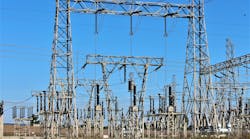American Superconductor Corp. has shipped its first superconducting magnetic energy storage (SMES) product to Europe. The unit was sold to Steweag, an Austrian electric utility that ordered the unit in January 1999. Steweag is the first European distributor of American Superconductor's line of industrial power quality products based on SMES technology.
This first European SMES-based power quality system was installed in April at Austria Druckguss, an aluminum foundry in Gleisdorf, Austria. The foundry had been experiencing a significant number of plant shut downs owing to momentary sags in electrical voltage caused primarily by lightning storms typical in the region where the foundry is located. The SMES unit is anticipated to eliminate 100% of these power quality problems.
Housed in a portable 48-ft (14.6-m) trailer, American Superconductor's SMES product line uses an energy storage electromagnet made with low-temperature superconductor wire. The superconducting properties of the electromagnet allow it to carry large currents without resistance, and to be quickly charged and discharged. The electromagnet can be operated indefinitely without degradation. SMES units use power electronics to sense momentary electrical power disturbances, more than 80% of which last less than two seconds and instantly provide supplemental power to eliminate the disturbance. Once incoming electric power is stabilized, machinery is run again entirely on the utility power source.
Line Switches Move To a Higher Level A team of employees at Florida Power & Light Co. (FPL), Juno Beach, Florida, U.S., successfully installed the first phase-over-phase (POP) S&C Mark V switch configuration in the world. The POP switch was placed in service on the afternoon of Dec. 23, 1998 to meet the in-service date of a fast track re-conductor project.
This special switch configuration was installed outside Geneva substation in north central Florida on a spun concrete pole. The site proved to be an ideal location to test this new technology because of the crowded conditions within the confines of the station. Geneva substation is a single transformer hard-tapped station off of the Norris to Sanford 115-kV line. Because of Geneva's location within the FPL system, all of the load cannot be picked up in the field during peak load conditions.
After questioning various manufacturers, FPL personnel found that S&C recently had designed an application for a vertically mounted Mark V switch for Alabama Power Co., Birmingham, Alabama. Even though Alabama Power hadn't installed the unit yet and no operating history existed, the project's critical deadline was enough to convince FPL to move ahead and install the new switch as soon as possible. Even though there were a few problems encountered during the installation, the project was deemed a success. Once the switches were mounted, wired and adjusted, they were operated locally by control handle and by dispatcher.
Y2K Drill Successful In April, the electric power industry of North America conducted a Year 2000 (Y2K) drill simulating the partial loss of voice and communications needed to operate the electric power grids of the United States and Canada. The drill was facilitated by the North American Electric Reliability Council (NERC), who is coordinating Y2K preparations of the electric power industry, and monitored by the U.S. Department of Energy. At no time during the drill were electric customers affected by the exercise. Overall, the drill was a successful back up of voice systems and manual procedures needed to operate in the unlikely event of a loss of communications, according to NERC. Twenty-two regional coordinators participated in the drill along with 200 electric utilities across North America.
Typical drill scenarios included loss of external voice systems and real-time data systems used to monitor and control electric power systems. Additional aspects of the drill included partial loss of data acquisition and control computers in the energy control centers.
Lessons learned from the drill include: - Incorrect phone numbers were identified. - Geographic coverage of low- and high-frequency radios will require relocation of some antennas. - Personnel require additional training on the use of satellite voice systems. - Voice traffic priorities need to be established and practiced. - Back up voice transmissions were noisy. - Severe lightning storms in the Midwest temporarily interfered with some of the radio systems.
The industry is preparing for a second major Y2K drill on Sept. 8-9.
German Pilger Mill Installs Large Coupling A large transmission drive flexible coupling with a torque rating of up to five million Nm has been manufactured by UK-based Renold Hi-Tec Couplings.
It has been installed at Vallourec Mannesmann Tubes at Rath, Germany, in Europe's largest pilger mill. The coupling, a size 700 WB, is more than 6.6 ft (2 m) long, 6.6 ft (2 m) in diameter and weighs more than 25 tonnes. The customer is gearbox manufacturer Flender Esat GmbH, main contractor for an upgrading program at the Vallourec Mannesmann Tubes installation.
Fitted between the gearbox and pinion box on a main transmission drive at Vallourec Mannesmann, the coupling assembly dampens extreme impact torques that occur during the hot forming of high-strength, seamless steel tubes weighing up to 5511 lb (2500 kg) each. By significantly reducing torque amplification, the couplings work well in high stress applications where more rigid couplings could cause damage.

